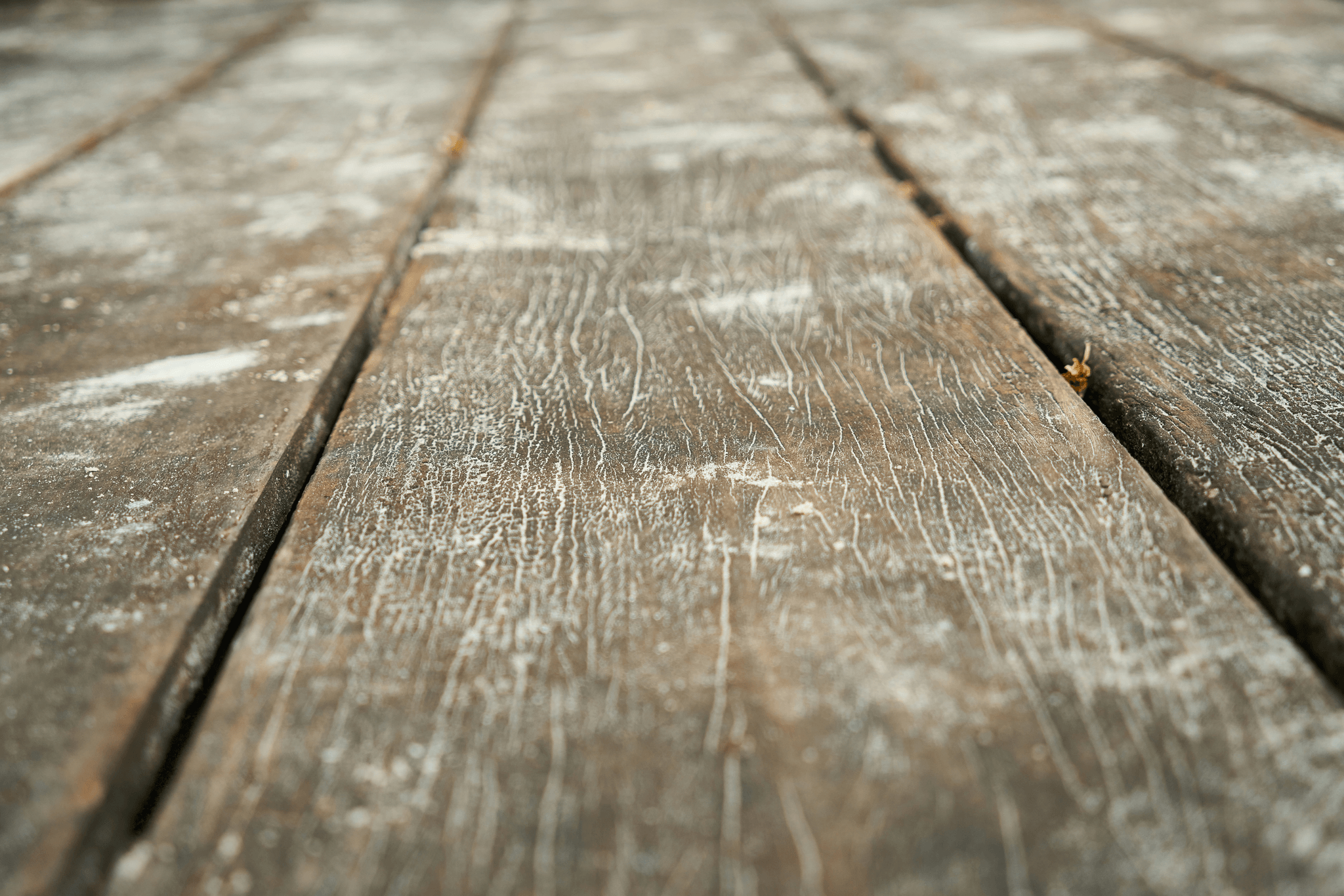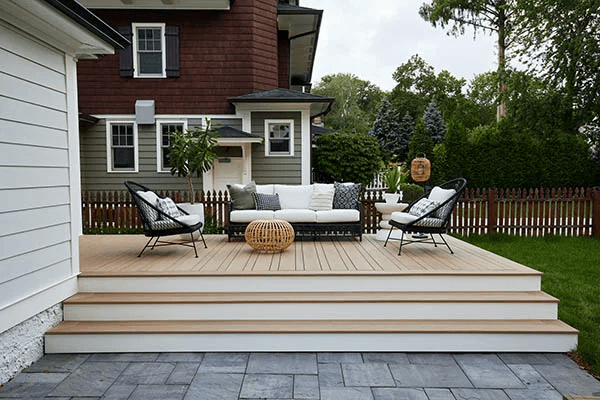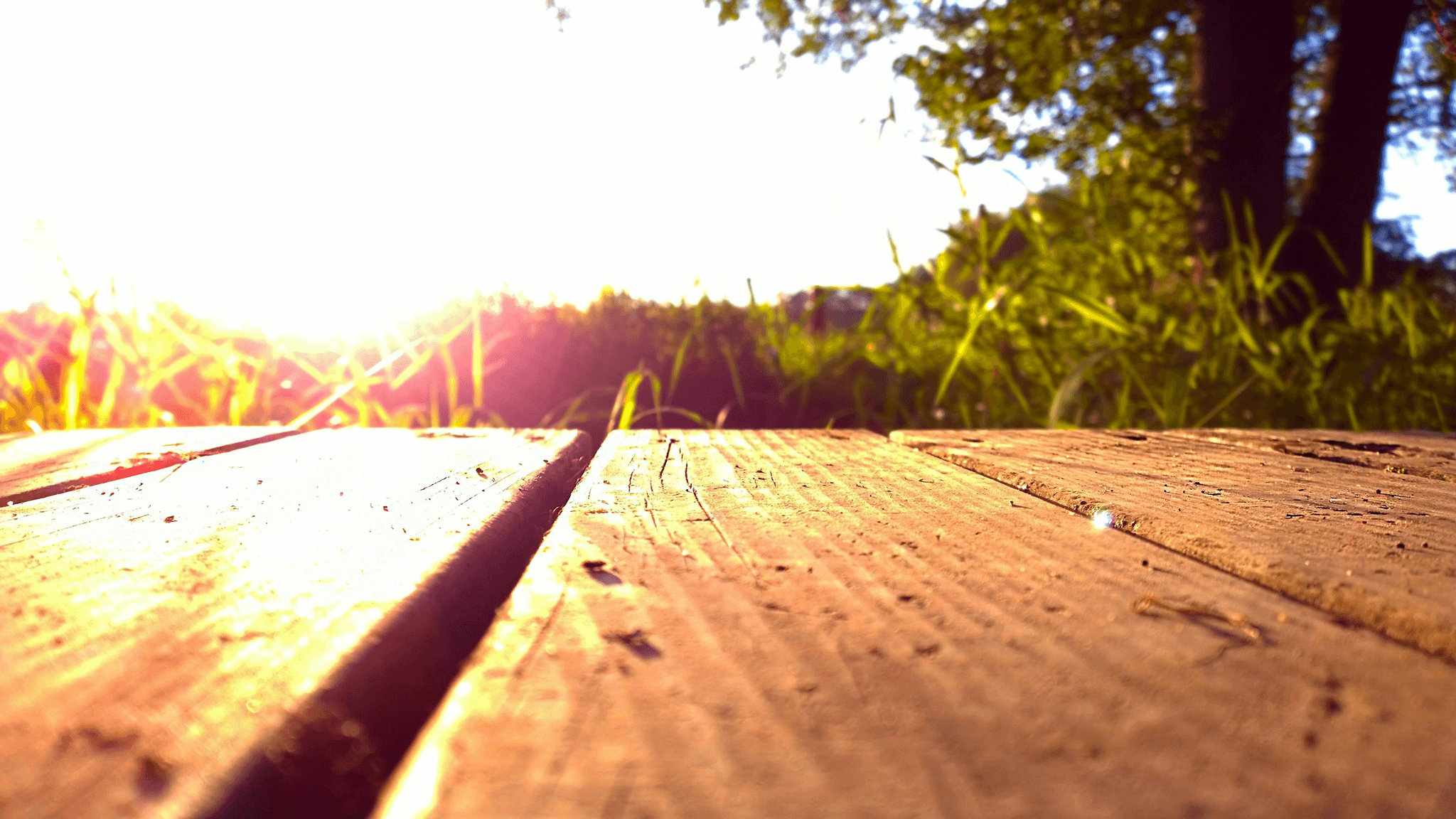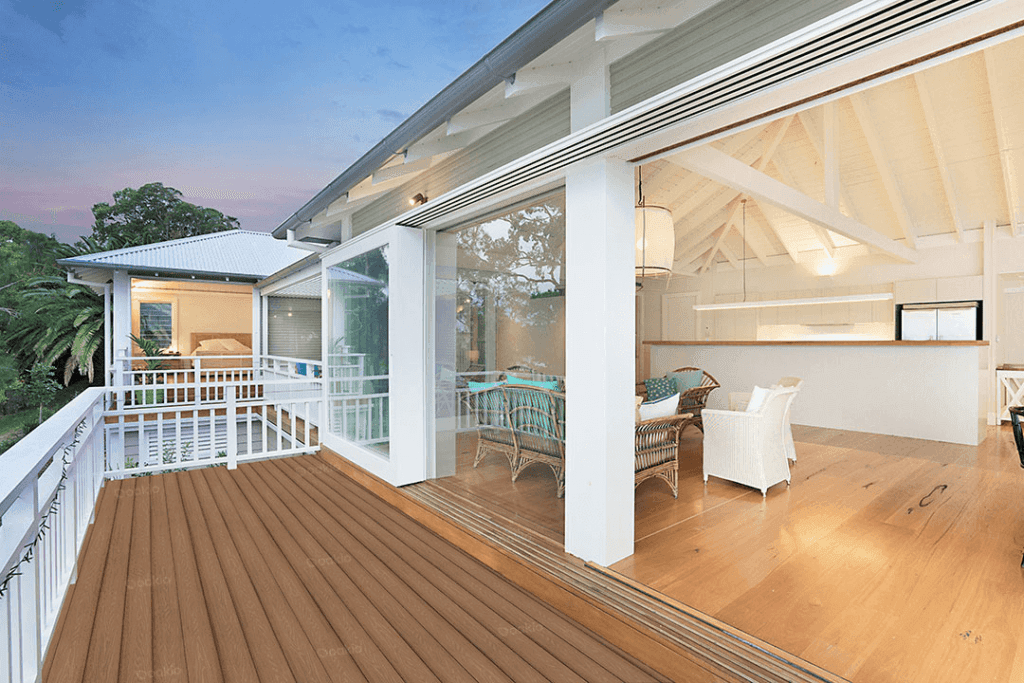Introduction
However, one of the most frustrating issues homeowners face is warped composite decking. Understanding what causes this warping and how to fix warped composite decking can save you time, money, and a lot of headaches.
Understanding Warped Composite Decking
Warped composite decking refers to the bending or twisting of composite boards due to various environmental factors or improper installation. Unlike traditional wood, good composite decking is designed to withstand elements like moisture and UV rays; however, it’s not entirely immune to warping. Recognizing the signs of warping early on can help you take corrective measures before the problem escalates.
Common Causes of Warping
Several factors contribute to warped composite decking, including inadequate drainage during installation and exposure to extreme temperatures. Additionally, poor-quality materials can lead to more significant issues with your composite boards over time. Understanding these common causes is crucial for homeowners who want their PVC decking or composite wood installations to last.
The Importance of Straight Decking
Straight decking not only enhances the aesthetic appeal of your outdoor space but also ensures safety for those using it. Warped boards can create tripping hazards and may lead to further damage if left unaddressed, making it essential for homeowners to know how to fix warped composite decking effectively. By maintaining straight and level surfaces with good composite decking practices, you’ll enjoy a beautiful and functional deck for years.
What is Warped Composite Decking?

Warped composite decking can be a frustrating issue for homeowners looking to maintain a beautiful outdoor space. Understanding what composite decking is and how it differs from traditional wood can help you appreciate its benefits and the importance of keeping it straight. Let’s dive into the specifics of what makes composite boards unique and why warping occurs.
Definition of Composite Decking
Composite decking refers to a man-made building product that combines wood fibers and recycled plastic materials, resulting in a durable alternative to traditional lumber. This blend creates composite boards that offer the aesthetic appeal of wood while minimizing maintenance needs. When properly manufactured, good composite decking is designed to resist fading, splintering, and warping, making it an ideal choice for outdoor applications.
Characteristics of Good Composite Decking
Good composite decking should exhibit several key characteristics that set it apart from inferior products. First and foremost, it should be resistant to moisture absorption, which helps prevent warping over time. Additionally, quality composite wood will have UV protection to maintain color stability and durability against harsh weather conditions—two critical factors that contribute to its longevity.
Furthermore, good composite decking should have a reliable warranty backing its performance, reflecting confidence in its quality. Homeowners should also look for low-maintenance options that do not require regular staining or sealing like traditional wood does. Ultimately, understanding these characteristics can help you choose the right material for your deck and avoid issues like how to fix warped composite decking down the line.
Differences from Traditional Wood
When comparing composite decking with traditional wood, several differences come into play that impact both performance and maintenance requirements. For starters, while traditional wood decks may look beautiful initially, they are prone to rotting, splintering, and warping due to exposure to moisture and temperature fluctuations—issues that good composite decking largely mitigates.
Moreover, unlike natural lumber which requires regular upkeep such as sanding or staining every few years, PVC decking made from synthetic materials demands minimal maintenance—just an occasional wash with soap and water will do! This ease of care is particularly appealing for homeowners who want more time enjoying their deck rather than maintaining it.
In summary, understanding these distinctions between materials not only highlights the advantages of choosing quality composite boards but also underscores the importance of proper installation techniques to prevent problems like warping in the first place.
How to Fix Warped Composite Decking

Warped composite decking can be a homeowner's nightmare, but fear not! With the right methods and tools, you can restore your composite boards to their former glory. Whether it's a slight bow or a significant twist, knowing how to fix warped composite decking is essential for maintaining the beauty and functionality of your outdoor space.
Methods for Straightening Decking Boards
One popular method for straightening warped composite decking boards is using heat. A heat gun can help soften the material, allowing it to bend back into shape more easily. Alternatively, you might consider applying pressure by placing weights on the warped areas while they cool down—this works particularly well with good composite decking that has some flexibility.
Another effective technique involves removing the affected boards and re-installing them properly. This may involve replacing screws or using brackets to ensure they lie flat against the joists. If you’re dealing with PVC decking, remember that it may require different handling than traditional composite wood due to its unique properties.
Lastly, if your composite boards are still under warranty, check with the manufacturer for any recommended repair techniques specific to their product line. They might have insights that could save you time and hassle in fixing warped decking issues.
Tools You'll Need for the Job
Before diving into how to fix warped composite decking, gather your tools! First on your list should be a reliable heat gun; it’s crucial for softening those stubborn curves in your boards. You’ll also need a set of clamps or weights to hold everything in place while it cools down or sets—think of them as your trusty sidekicks in this endeavor.
Next up is a good quality screwdriver or drill; these will come in handy if you're planning on removing or re-installing any of those pesky screws holding down your composite boards. Additionally, having some wood glue designed for plastic materials can be beneficial if you find any cracks during inspection—after all, we want those good composite decking pieces intact!
Finally, don’t forget safety gear like gloves and goggles! You’ll want protection from both flying debris when working with tools and potential burns from using heat guns.
Safety Precautions While Fixing
Safety first! When learning how to fix warped composite decking, it's crucial to prioritize precautions throughout the process. Start by ensuring that you're working in a well-ventilated area when using tools like heat guns; this prevents harmful fumes from building up around you.
Always wear protective gear such as gloves and safety goggles while handling tools and materials—better safe than sorry! If you're using heavy weights or clamps during repair work on your composite boards, make sure they’re secure before applying pressure; no one wants an unexpected mishap during this DIY adventure.
Lastly, keep children and pets away from the workspace while you're busy fixing things up—it’s easy for curious little ones (or furry friends) to get into trouble when power tools are involved! By following these safety precautions diligently, you'll ensure a smooth experience while restoring those beautiful PVC decking surfaces.
Prevention Strategies for Warping

Preventing warping in composite decking is crucial for maintaining the aesthetic and structural integrity of your outdoor space. By understanding the factors that contribute to warping, you can take proactive measures that will ensure your composite decking boards remain straight and durable for years to come. Let’s dive into some effective strategies that every homeowner should consider.
Choosing Quality Composite Materials
Opting for good composite decking means selecting products made from high-quality resins and wood fibers, which are less prone to warping over time. Investing in reputable brands can save you headaches down the line, as these materials often come with warranties that cover issues like warping.
Additionally, look for composite boards that have been tested against extreme weather conditions. Some manufacturers offer enhanced UV protection and moisture resistance features that significantly reduce the chances of warping. Remember, choosing quality composite materials is a foundational step in ensuring your deck stands strong against the elements.
Installation Tips for Composite Wood
Make sure to follow the manufacturer’s guidelines closely; improper spacing or inadequate support can lead to bending or buckling over time. Using recommended fasteners and ensuring proper ventilation beneath the deck can also help maintain its shape.
Another key tip is to allow your composite wood to acclimate before installation—this means letting it sit outdoors for a few days so it can adjust to local temperature and humidity levels. This simple step can greatly reduce future issues with warping after installation is complete. Remember, taking care during installation sets the stage for long-lasting performance from your composite decking boards.
Maintaining PVC Decking
Maintaining PVC decking may seem straightforward, but there are some specific practices you should adopt to keep it looking great and functioning well over time. Regular cleaning with mild soap and water helps prevent dirt buildup, which can trap moisture and lead to potential warping of your composite boards if left unchecked.
Moreover, consider applying a protective sealant designed specifically for PVC decks; this adds an extra layer of defense against environmental factors like sun exposure and rainwater accumulation that could cause distortion in your deck's structure over time. Finally, always keep an eye out for any signs of wear or damage—catching issues early on makes fixing warped composite decking much easier than waiting until problems escalate.
When to Replace Warped Decking

Warped composite decking can be a real headache for homeowners. While some warping can be fixed, there comes a time when replacement is the only viable option. Understanding when to take that leap can save you both time and money in the long run.
Signs Your Composite Boards Are Beyond Repair
Knowing when your composite boards are beyond repair is crucial for maintaining a safe and aesthetically pleasing deck. If you notice significant bending, cracking, or splitting in your composite decking boards, it may be time to consider replacement. Additionally, if mold or mildew has taken hold and cleaning efforts have failed, these issues could compromise the integrity of your composite wood.
Another red flag is excessive fading or discoloration that affects the appearance of your deck. If your once-vibrant PVC decking now resembles a dull shadow of its former self despite proper maintenance, it might indicate that the material has reached its lifespan. Lastly, if you find yourself constantly fixing warped composite decking rather than enjoying your outdoor space, it's a sign that new boards may be necessary.
Evaluating Long-term Cost vs. Repair
When faced with warped composite decking, evaluating long-term costs versus repairs can feel like solving a puzzle with missing pieces. Initially, repairing warped boards might seem more economical; however, frequent fixes can add up over time and lead to further complications down the road. Consider factors such as safety risks associated with compromised boards and potential damage to surrounding areas before making a decision.
Additionally, investing in good composite decking from the outset can prevent future headaches related to warping and deterioration. While high-quality materials may come with a higher upfront cost, their longevity often outweighs cheaper alternatives in terms of both performance and aesthetics over time. Always weigh these considerations against how often you'll need to address issues stemming from poorly performing composite wood.
Recommended Products from Composite Decking Inc
If you've decided that replacement is necessary after assessing your warped decking situation, look no further than Composite Decking Inc for top-notch options! Their range of products includes high-quality composite boards designed specifically to resist warping while providing durability and beauty for years on end. With various colors and styles available, you're sure to find something that suits your taste while ensuring peace of mind regarding maintenance.
Their innovative PVC decking options offer an excellent alternative for those looking for low-maintenance solutions without sacrificing style or performance—perfect if you're tired of worrying about how to fix warped composite decking every season! Plus, their knowledgeable team can guide you through choosing the best materials tailored to your specific needs—making this process easier than ever before! So don’t hesitate; invest wisely!
Professional Help vs. DIY

When faced with warped composite decking, homeowners often grapple with the decision of whether to hire a professional or tackle the project themselves. Each option has its merits and drawbacks, which can significantly influence your time, budget, and overall satisfaction with the results. Understanding these factors is crucial for making an informed choice that aligns with your skills and resources.
Benefits of Hiring a Decking Professional
One of the main benefits of hiring a decking professional is their expertise in dealing with composite boards, ensuring that they know how to fix warped composite decking efficiently and effectively. Professionals have access to specialized tools and techniques that can make short work of stubborn warping issues, reducing the risk of further damage to your composite wood. Additionally, their experience allows them to identify underlying problems that may not be immediately visible, providing long-term solutions rather than just cosmetic fixes.
Another advantage is the time saved by opting for professional help; while you might spend hours researching how to fix warped composite decking yourself, a skilled contractor can complete the job in a fraction of that time. This means less disruption to your daily life and more time enjoying your outdoor space instead of stressing over repairs. Plus, many professionals offer warranties on their work, giving you peace of mind should any issues arise after they leave.
Lastly, hiring an expert can enhance the quality of your deck's appearance; good composite decking deserves proper installation and maintenance for optimal aesthetics and functionality. A professional will ensure that your PVC decking looks great while also performing well under various weather conditions. In short, if you're looking for reliability and quality assurance in fixing warped composite decking boards, going pro might be worth considering.
When to Opt for a DIY Approach
If you have experience working with tools and materials like composite wood or PVC decking—and feel comfortable following guides—then rolling up your sleeves could be rewarding both financially and personally. Plus, completing such tasks on your own can provide immense satisfaction as you watch your hard work transform those unsightly warped boards into straight ones again.
However, it's crucial to recognize when DIY isn't advisable; if you're unsure about how to fix warped composite decking or lack confidence in using necessary tools safely—like saws or drills—it might be best left in more experienced hands. Additionally, if significant structural issues are present beyond simple warping—such as rotting joists or extensive damage—it's wise to call in a professional who specializes in deck repair rather than risking injury or further complications during repairs yourself.
Ultimately, consider both your skill level and available time before deciding on DIY versus hiring someone else; sometimes saving money upfront might lead to unexpected costs later if mistakes are made along the way! If you've got some basic tools lying around but are unsure about tackling complex repairs alone—there's no shame in seeking help from seasoned pros who know their way around good composite decking.
Cost Comparisons
When comparing costs between hiring professionals versus taking on a DIY project for fixing warped composite decking boards, several factors come into play that could influence your final decision significantly. Hiring an expert typically involves labor fees alongside material costs; depending on local rates and project complexity—you could find yourself spending anywhere from hundreds up into thousands of dollars just for labor alone! However—the benefit here lies not only in convenience but also potentially avoiding costly mistakes due to lack of experience when handling tricky repairs.
On the other hand—a DIY approach may appear more budget-friendly at first glance since you'll only need basic materials like replacement boards alongside some common tools found around most households (or easily rented). Yet don't forget about hidden expenses: purchasing specialized equipment (if needed) plus possible trips back-and-forth from hardware stores could add up quickly! Furthermore—time invested should factor into overall cost calculations too: what's it worth spending an entire weekend wrestling with stubborn planks when professionals could get it done efficiently?
In conclusion—the choice between professional help versus doing it yourself ultimately boils down not just solely based upon monetary considerations—but also personal capability levels along with willingness-to-invest-time-into-the-project! While DIY might save cash upfront—don’t overlook potential pitfalls lurking beneath surface-level savings!
Conclusion

In wrapping up our discussion on warped composite decking, it's crucial to recognize that proper maintenance can extend the life of your outdoor space significantly. Whether you’re dealing with minor warping or considering a complete overhaul, understanding how to fix warped composite decking is essential for any homeowner. Remember, the goal is not only to restore but also to enhance the beauty and functionality of your deck.
Final Thoughts on Decking Maintenance
Maintaining composite decking requires a proactive approach that includes regular inspections and immediate attention to any issues like warping. Good composite decking should withstand various weather conditions, but neglect can lead to problems down the line. By staying vigilant and addressing concerns promptly, you can ensure that your composite wood remains a beautiful and functional part of your home for years to come.
Key Takeaways for Homeowners
For homeowners looking to maintain their decks, remember these key points: first, know how to fix warped composite decking effectively using the right tools and methods; second, always choose quality materials when installing new composite boards; and third, keep up with regular maintenance practices for PVC decking or any other type of composite material you might have. Additionally, it’s wise to evaluate whether repairs are cost-effective compared to replacement options if significant warping occurs. Lastly, don’t hesitate to seek professional help when needed—sometimes expertise can save both time and money.
Resources for Quality Composite Decking
If you're in search of reliable resources for quality composite decking products, look no further than reputable brands that specialize in durable materials designed specifically for outdoor use. Websites like Composite Decking Inc provide valuable information on good composite decking options as well as tips on installation and maintenance strategies tailored just for you. Whether you're seeking advice on how to fix warped composite decking or looking into purchasing new boards altogether, these resources will guide you in making informed decisions.
